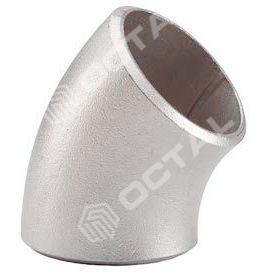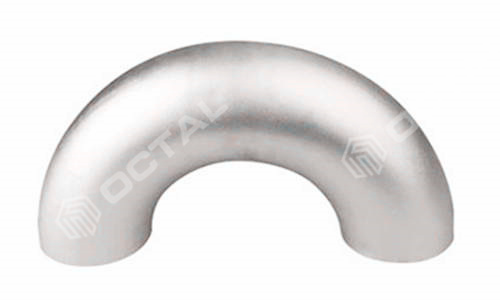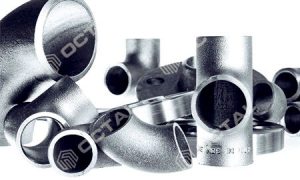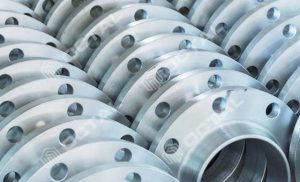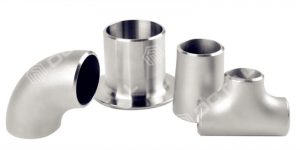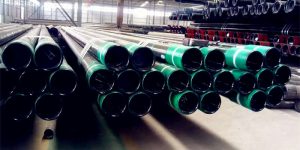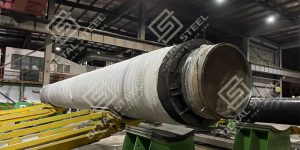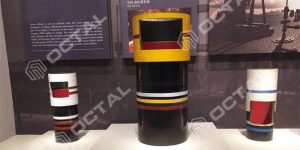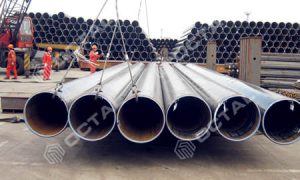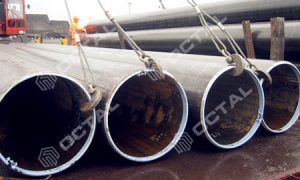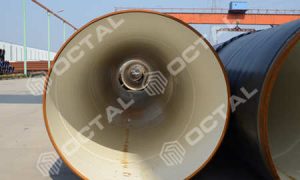Steel Pipe Elbow Material Types and Specifications – Fast to Know
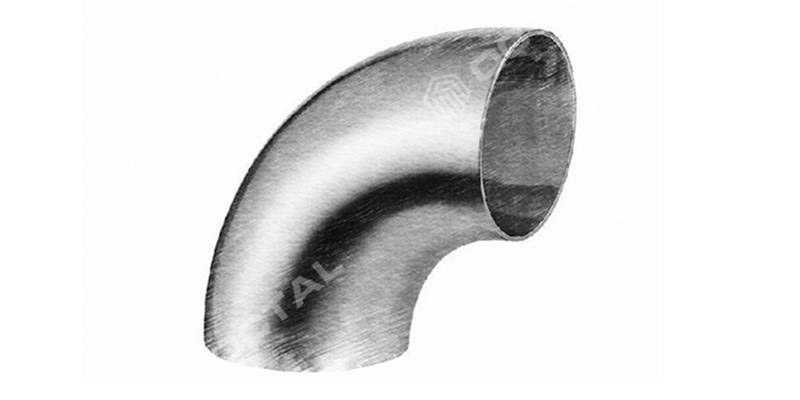
Steel pipe elbows are critical fittings in piping systems, designed to change the direction of fluid flow while maintaining pressure integrity and system efficiency. As one of the most commonly used pipe fittings, elbows are available in a wide range of materials, dimensions, and connection types to meet the diverse needs of industrial and commercial applications. Depending on service conditions, elbows can be manufactured from stainless steel, carbon steel, or alloy steel, and are supplied in multiple dimensional standards such as ASME/ANSI, DIN, and EN.
Elbows are categorized by their bend angle, radius, and connection type. Common bend angles include the 45-degree elbow, 90-degree elbow, and 180-degree return bend, while radius options include short-radius (SR) elbows and long-radius (LR) elbows. In terms of connections, users can choose from butt weld elbows, socket weld elbows, and threaded elbows, each serving distinct functions in pressure and installation requirements.
If you are always confused about elbow descriptions, like what is butt weld elbow? what is SW elbow? What does LR, SR means? Then you need to read below and we will explain specifications and applications for each type elbow, you will find out what exactly is your need before your purchase.
Steel Elbow Applications and Types
In simple terms, steel pipe elbow is a type of pipe fitting connected between two pipes. The main purpose is to change the course of direction. As we know, steel elbow can be classified into different degrees, normally is 45 degree steel pipe elbow, 90 degree steel pipe elbow and 180 degree steel pipe elbow. Other degree like 60° or 120° also used in pipeline systems in case special requirements.
90 Degree Steel Pipe Elbow is the most used type
90 degree steel pipe elbow is to change fluid direction by 90 degree, also called the vertical elbow, it is the most used type in all the pipeline systems, since it is easy to compatible with the steel construction and structural.
• 90 degree elbow of long radius
This kind of 90 degree steel pipe elbow is installed between different lengths of pipe or tubing.
It helps to change the direction at an angle of 90 degrees. It’s often used for connection of hoses to water pumps, deck drains, and valves.
• 90 degree elbow of short radius
The main use is just like the previously stated pipe, but the diameter is short. So this kind of piping elbow is often used when shortage of space.
45 degree steel pipe elbow
45 degree elbow is to change pipe direction by 45 degree, it is second common used type in industrial pipelines.
• 45 degree LR steel elbow
This kind of elbow is installed between two pipes so that the direction could be changed at an angle of 45 degrees. Since it creates lower frictional resistance, pressure also be lower.
• 45 degree SR elbow
This kind of elbow is usually attached to copper, plastic, steel, cast iron, and lead. It could also be attached to clamps of stainless steel and rubber. As a result, it’s widely used in chemical, food, facilities of water supply, electronic industrial and chemical pipelines, gardening and agriculture production, piping for solar power facilities, and pipelines for air conditioning.
180 degree steel elbow
This kind of elbow helps to change the direction at an angle of 180 degrees. Since it usually results in low pressure, its applications is limited to minimum deposition and low turbulence systems.
Butt weld elbow – Most common connection type
The easiest way to connect the elbow and pipe is to do welding directly to the elbow ends with pipe ends, where we called butt to butt weld (BW Elbow, as showed in above picture). Butt weld elbow mainly used in a higher pressure and temperature than the other connection types of elbow. (Than socket weld elbow or the threaded piping elbow)
Socket weld elbow – For small diameter pipelines
Socket weld elbow also connected with ends welding, different with BW elbow is: Socket weld elbow ends has a ladder shaped area, which we can insert the pipe ends to this area (SW elbow ladder diameter fit with pipe outer diameter), after inserting do the welding work to joint them together.
So SW elbow ends actual out diameter is bigger than the elbow diameter. (Same with threaded pipe elbow). Such structural makes welding process more easy for the small diameter elbow and pipes.
Threaded Elbow – Easy to install
Similar shape with SW elbow, different is ladder area inner surface has been machined to threads, it makes more easy to install and un-install. Which is good for the pipeline repair and maintenance.
Reducer Elbow
Also known as decreasing elbow, is a kind of pipe which applied when both the elbow and closures are different in size. It’s often used so that different sizes of the pipes could be easily distinguished in order to make noteworthy turns.
What is Elbow Radius
Elbow radius means the curvature radius.If the radius is same with the pipe diameter, it is the short radius elbow (Applied in low pressure and low velocity pipelines); If the radius is larger than the pipe diameter, R ≥ 1.5 Diameter, then we called long radius elbow. (For high pressure and high flow velocity pipelines).
In general requirements, if buyer didn’t specify the radius specs, then it will be deemed as LR elbow.
Stainless steel pipe elbow
Stainless steel elbow material in stainless (Added Cr and Ni chemicals in carbon steel), standards and grades commonly in ASTM A403 WP 304/304L, 316/316L, ASTM A270 etc. It has higher strength and higher corrosion-resistances than carbon steel elbow.
Surface treatment in 2B or mirror, these are usually used in food industries and sanitary purposes.
For general surface treatment stainless steel elbow commonly used in high corrosion environment in chemical plants or offshore oil and gas pipelines.
Carbon steel elbow
Material in carbon steel, referred standards as:
ASTM 234 WPB and WPC
ASTM A420 WPL6
MSS-SP-75 WPHY 42, 46, 52, 56, 60, 65 and 70
How to make steel pipe elbow – Manufacturing processes
Mentioned of the formation of these kinds of steel pipe elbows, it consists of a lot of steps. Even then, it has been deemed to be pretty simplistic when compared to other production processes.
Firstly, we could weld a polygonal circular shell or polygonal fan-shaped shell with closed ends. When the inner part of pipe body is filled with pressure mediums, the cross-section will be changed from polygon to a circle like a pipe. Eventually, the cross-section will be a round shape shell under the internal pressure. The circular ring can be cut into four 90° elbows or six 60° elbows or any other size as required. Thanks to the advancement in technology, the welding process is applied in different ways. For instance, it has now become possible to weld and manufacture bigger sizes of steel piping elbows, especially large diameters that in long radius.
(Another way is to purchase seamless pipe or welded pipe directly as steel elbow raw material, then use the heating and forming machine to heat the pipe body, then push the pipe and forming it to a elbow shape with different degree mould.)
Generally, Carbon steel with high amount of carbon that definitely be able to give you more strength and hardness but lower plasticity. Therefore, those which not contain a large amount of alloy elements are usually referred to as carbon steel or straight carbon steel.
Selecting the right steel pipe elbow requires understanding not only its dimensional specifications but also its connection method, radius type, and material compatibility with the intended service environment. For instance, a butt weld elbow provides superior strength and smooth internal flow, while a socket weld or threaded elbow may be preferred for smaller pipe sizes or systems requiring frequent disassembly. Likewise, choosing between an LR elbow and SR elbow depends on space constraints and flow characteristics within the pipeline.
At Octal Steel, we supply a complete range of carbon steel elbows, stainless steel elbows, and alloy steel elbows, all manufactured in compliance with international standards and available in multiple bend angles, radii, and pressure classes. With strict quality control and full certification, our elbows provide engineers with reliable solutions for power plants, petrochemical installations, offshore projects, and general piping networks. By combining technical precision with dependable supply, Octal Steel helps clients build piping systems that meet both performance and longevity requirements.


